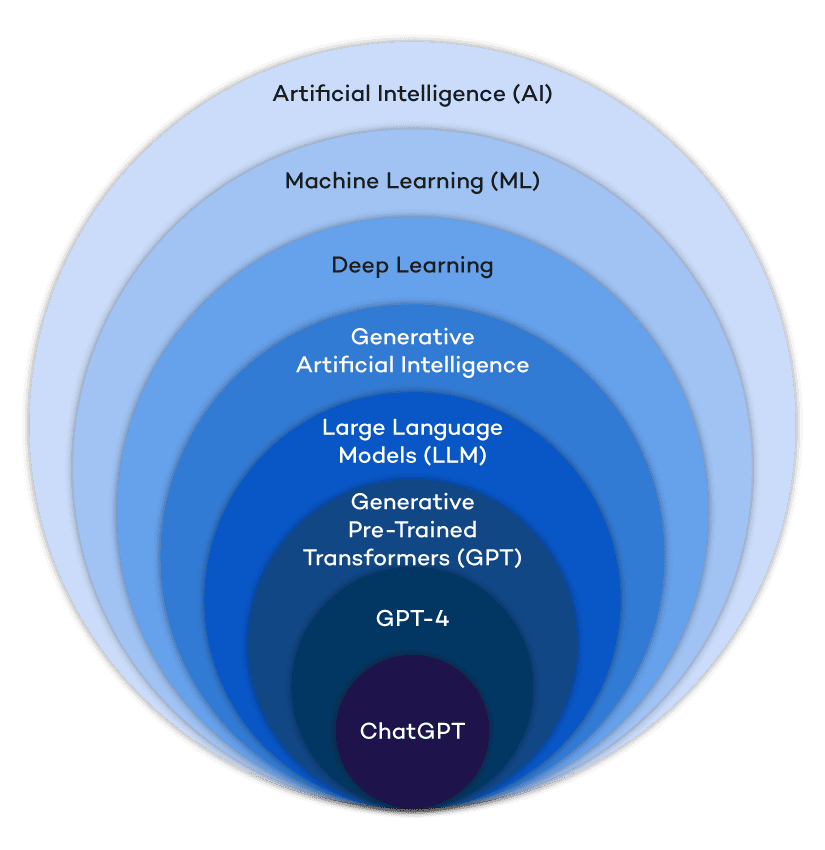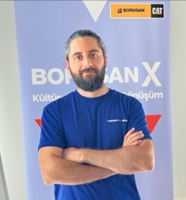In this article, I would like to talk to you about an area of artificial intelligence that has been on the rise recently. LLM, or "Large Language Model", which enters our daily lives as ChatGPT, refers to large-scale language models used in artificial intelligence. Before talking about ChatGPT, I think it is very important to briefly explain the historical marks of this field in terms of understanding the subject.
Milestone Applications of the History of Artificial Intelligence
AI has been present in our daily lives, for example, many features on our smartphones, voice assistants, autonomous vehicles…
The earliest works in the field of artificial intelligence traceback back to the early 1950s. Alan Turing's paper "Computers and Intelligence" from this period is considered a reference document in the field of artificial intelligence. The Turing Test, developed by Alan Turing, is the first work in this field. The aim of the work was to determine whether a machine could exhibit behavior similar to humans. The Turing Test involves a human who is both communicating in real-time with a computer and another human. The human in the test tries to determine which one is human, and which one is a machine. If the human cannot determine which one is human and which one is machine, then the computer is considered to have "passed the Turing Test," and it is assumed to have human-like intelligence.
The next step in the history of artificial intelligence is Eliza, dated 1966. This program was the first artificial intelligence program to interact with humans, conducting psychotherapy, and it stood out for its human-like natural language processing capabilities.
Deep Blue, developed by IBM in 1997, is considered one of the important advancements in game theory as it was the first computer to beat world chess champion Garry Kasparov.
Watson, developed by IBM in 2011, achieved great success by defeating human opponents in the game "Jeopardy!", highlighting progress in natural language processing and big data analytics.
One of the more recent programs, AlphaGo, developed by Google DeepMind, can play the game Go. This program, which was originally designed to learn the game of Go by analyzing people's game moves and examining thousands of games, was still unable to beat people in the game. Later, it improved itself by playing on its own and learning from experiences; thus, in October 2015, it managed to defeat human intelligence and become the first computer program to beat a professional Go player on a 19x19 board without being given an advantage.

These milestones mark advancements in the field of artificial intelligence and the development of various capabilities. These efforts represent significant steps to increase the complexity and capabilities of AI.
LLM (Large Language Models) A.K.A CHATGPT
Now that we have talked about applications that have an important place in the history of artificial intelligence, we can continue our topic with ChatGPT, which is our main focus. ChatGPT, developed by the start-up OpenAI founded by Sam Altman in 2015, is defined as a natural language processing technology using machine learning, deep learning, natural language understanding, and natural language generation to answer questions or hold conversations. It can understand your questions or comments and mimic human conversation by providing interesting and conversational-style responses.
GPT in the name of ChatGPT, which was launched in November 2022, means "generative pre-trained transformer". This means it has been trained on large amounts of human language through internet sources such as books, articles, websites, and social media.
ChatGPT functions like a chatbot designed to converse with you. After receiving a question or prompt, ChatGPT uses machine learning algorithms to understand the context of the conversation and generate appropriate responses. To generate a response, it predicts the next word in a given sequence based on patterns it has learned from human language. The more details you provide, the more precise responses ChatGPT offers.
Generative AI has also entered our lives with the development of technologies in this field. Generative AI, a subset of artificial intelligence systems, is used to generate new data or content. These systems analyze data sets, particularly using deep learning techniques like neural networks, to learn from the data and generate new content. They can work on text, images, music, and other data types.
For example, a text generation model can produce similar writings by analyzing texts in the data set. As in the DALL-E example, an image generator model can produce new images based on a few examples.
The infographic below summarizes artificial intelligence technologies quite well:

According to a study by LinkedIn, sentiments about Generative AI are largely optimistic; while 74% of executives believe Generative AI will benefit their employees, 47% of professionals worldwide believe AI will advance their careers by providing access to information and insights more quickly. Moreover, companies continue to invest in AI capabilities. Just looking at the number of companies with a "Head of AI" position tells us enough. Since December 2022, there has been a double-digit increase in the number of these companies.
I hope you enjoyed reading the first part of my article 😊 To be continued with details about technical aspect of ChatGPT and its areas of use, stay tuned for the second part!
Sources
https://www.coursera.org/learn/generative-ai-for-everyone/lecture/u2EQ9/automation-potential-across-sectors
https://economicgraph.linkedin.com/content/dam/me/economicgraph/en-us/PDF/future-of-work-report-ai-november-2023.pdf
https://content.dataiku.com/llm-starter-kit
https://memsql.wistia.com/medias/tck1f3clzj?campaignid=701UJ000000pYIzYAM
https://barissglc.medium.com/llm-large-language-models-nedir-b%C3%BCy%C3%BCk-dil-modellerine-k%C4%B1sa-bir-giri%C5%9F-9872ce8523af
https://memsql.wistia.com/medias/xqtu6j46y0
https://www.youtube.com/watch?v=UU1WVnMk4E8
https://www.youtube.com/watch?v=zjkBMFhNj_g&t=2s
https://on24static.akamaized.net/event/43/71/52/4/rt/1/documents/resourceList1699896189333/llmdevdaysession2final1699896189333.pdf
https://on24static.akamaized.net/event/43/71/54/9/rt/1/documents/resourceList1699985599696/llmdevdaysession41699985599696.pdf
https://on24static.akamaized.net/event/43/71/30/0/rt/1/documents/resourceList1700153986852/llmdevdaysession1stakeholderreviewdt202311151700153986852.pdf
https://nvdam.widen.net/s/rvsgdxpfkz/dli-generative-ai-llm-learning-path-2740963
https://www.deeplearning.ai/short-courses/chatgpt-prompt-engineering-for-developers/
https://learn.microsoft.com/tr-tr/microsoft-365-copilot/microsoft-365-copilot-overview
https://www.youtube.com/watch?v=EEhgiHnnHXg
https://guardian.ng/technology/ready-set-go-rematch-of-man-vs-machine-in-ancient-game/

.jpg)









He has been working on different topics in the field of artificial intelligence and data science for 14 years. At Borusan Cat, where he is currently the Lead Data Scientist, he has been working on Artificial Intelligence since 2019. As a motor sports enthusiast Yasin enjoys reading about psychoanalysis, dealing with data and experiencing new technologies.